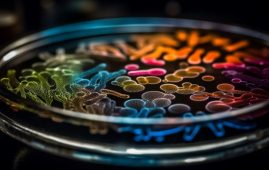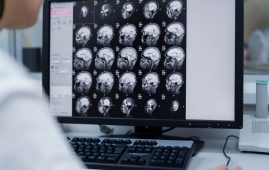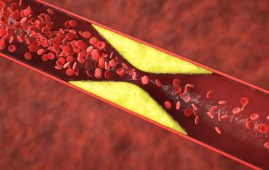

Eight years of work. A collaboration between the Laboratory of Neuroethology of Non-Human Primates of the University of Parma’s Department of Medicine and Surgery, led by Luca Bonini, and a team from the Biorobotics Institute of the Sant’Anna School of Pisa, coordinated by Alberto Mazzoni, principal investigator at the Computational Neuroengineering Lab, with the contribution of Silvestro Micera, professor in Bioengineering.
Support from three European Research Council (ERC) initiatives and numerous Italian national projects, including MNESYS and BRIEF. These are just a few of the findings from a revolutionary study published in Science that reveals new processes by which the brain regulates natural behaviors. The findings call into question several long-held beliefs about how the motor system functions and suggest new avenues for neurorehabilitation and robotics research.
Researchers used novel telemetric devices to record the activity of hundreds of neurons in monkeys’ motor areas, which were entirely free to perform spontaneous action such as walking, climbing, or yawning. This was a significant step forward from prior studies because the current technologies required researchers to investigate immobile brains during trained and stereotyped actions. Instead, the unique approach allows us to better understand how the brain orchestrates spontaneous movements in natural situations.
“Our brains are constantly moving – explains Luca Bonini, head of the research project – and this new approach has changed the classical idea that specific brain regions, or even single neuronal cells, control specific actions – such as biting, drinking, or grasping. According to our results, just as the individual keys of a piano can compose many different melodies, the neurons in the motor areas of our brain create complex synergies, allowing us to organise the variety of spontaneous actions that we are capable of performing, some of which until now were even impossible to study in the laboratory”.
Collaboration with bioengineers from the Sant’Anna School in Pisa enabled the decoding of the intricacy of this neural activity and the prediction of the animals’ spontaneous actions using just neuronal signals.
“Our results – says Alberto Mazzoni – indicate that the neuronal activity recorded during spontaneous behaviour is much more informative than that obtained in classical laboratory contexts. This information allows us to understand how the brain controls the production of voluntary actions differently depending on the context“.
The significant neurological and behavioral similarities to humans suggests that this finding could have clinical implications.
“The results obtained through this interdisciplinary collaboration open up new and important translational perspectives for neurotechnology and neurorehabilitation – adds Silvestro Micera – Moreover, this work is a further demonstration of the extraordinary impact that the Next Generation UE projects have had on Italian research. Our hope is to continue these collaborations thanks to new funding initiatives supported by our country“.
“We hope – conclude Francesca Lanzarini, Monica Maranesi, Elena Hilary Rondoni and Davide Albertini, co-first authors of the paper – that our approach can contribute to the transition from classical neurophysiology to neuroethology in many studies on the relationship between brain and behaviour, improving the quality of life of animals even during experiments and, consequently, the validity of the results of neuroscientific research on non-human primates, which, as this work shows, are still fundamental and irreplaceable”.
more recommended stories
 New Blood Cancer Model Unveils Drug Resistance
New Blood Cancer Model Unveils Drug ResistanceNew Lab Model Reveals Gene Mutation.
 Healthy Habits Slash Diverticulitis Risk in Half: Clinical Insights
Healthy Habits Slash Diverticulitis Risk in Half: Clinical InsightsHealthy Habits Slash Diverticulitis Risk in.
 Caffeine and SIDS: A New Prevention Theory
Caffeine and SIDS: A New Prevention TheoryFor the first time in decades,.
 Microbial Metabolites Reveal Health Insights
Microbial Metabolites Reveal Health InsightsThe human body is not just.
 Reelin and Cocaine Addiction: A Breakthrough Study
Reelin and Cocaine Addiction: A Breakthrough StudyA groundbreaking study from the University.
 Preeclampsia and Stroke Risk: Long-Term Effects
Preeclampsia and Stroke Risk: Long-Term EffectsPreeclampsia (PE) – a hypertensive disorder.
 Statins and Depression: No Added Benefit
Statins and Depression: No Added BenefitWhat Are Statins Used For? Statins.
 Azithromycin Resistance Rises After Mass Treatment
Azithromycin Resistance Rises After Mass TreatmentMass drug administration (MDA) of azithromycin.
 Generative AI in Health Campaigns: A Game-Changer
Generative AI in Health Campaigns: A Game-ChangerMass media campaigns have long been.
 Molecular Stress in Aging Neurons Explained
Molecular Stress in Aging Neurons ExplainedAs the population ages, scientists are.

Leave a Comment